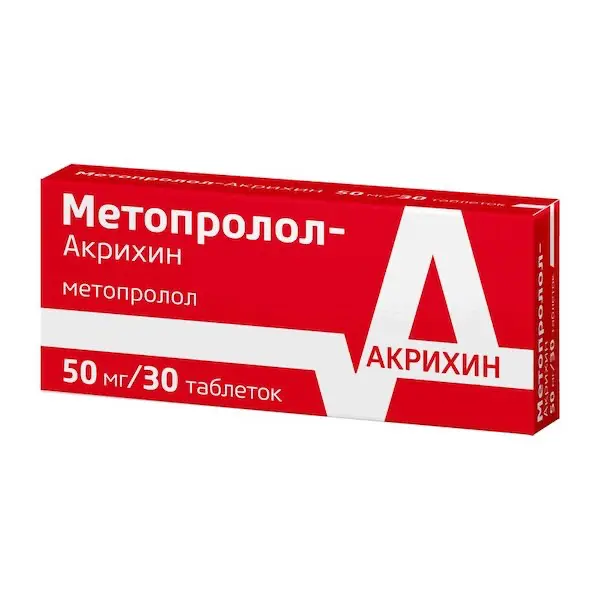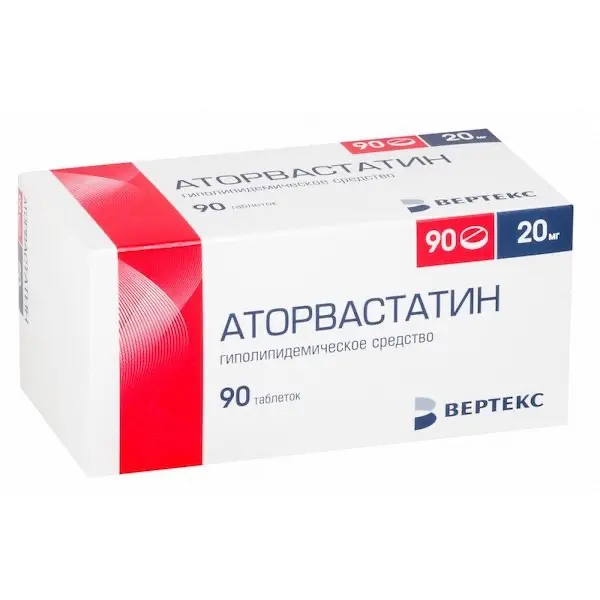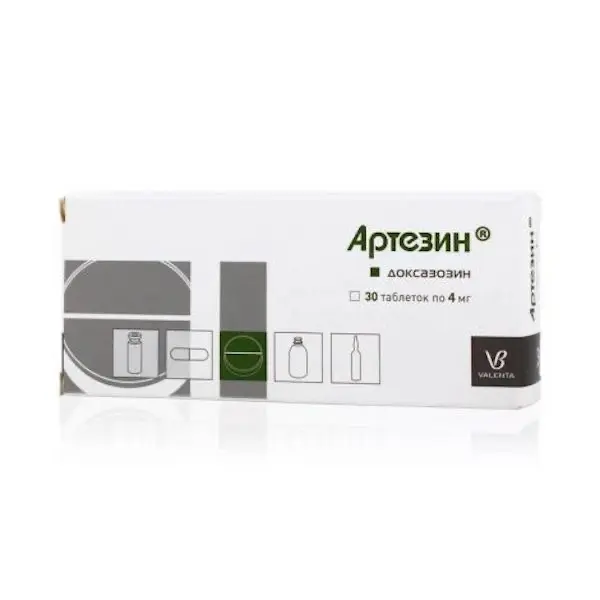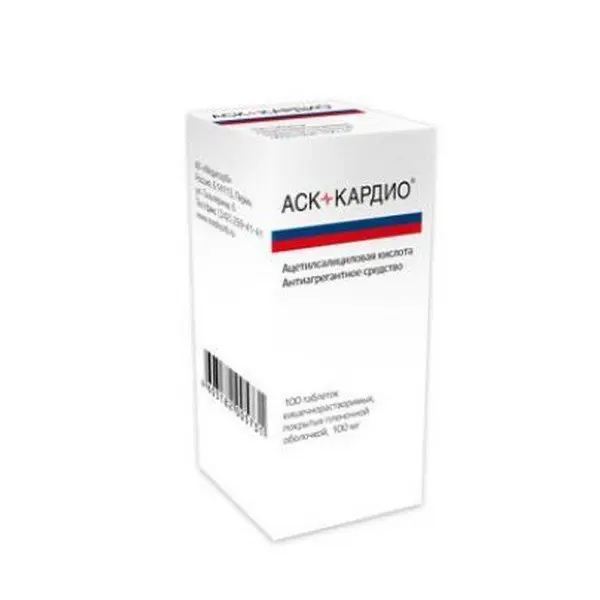Description
Metoprolol-Acrihin Pharmacodynamics
Metoprolol refers to the cardioselective beta-adrenoreceptor blockers, which have no intrinsic sympathomimetic activity and membrane stabilizing properties. It has hypotensive, antianginal and antiarrhythmic effects.
By blocking low doses of beta1-adrenoceptors in heart, it decreases catecholamine-stimulated cAMP formation from ATP, decreases intracellular calcium ions flow, has negative chrono-, dromo-, batmo- and inotropic effect (decreases heart rate, inhibits conduction and excitability, decreases myocardial contractility).
Total peripheral resistance increases at the beginning of beta-adrenoblockers use (during first 24 hours after oral administration) (as a result of reciprocal increase of alpha-adrenoreceptors activity and elimination of beta2-adrenoreceptors stimulation), which comes back to baseline in 1-3 days, and decreases after prolonged use.
Hypotensive effect is caused by reflex reduction of cardiac output and renin synthesis, inhibition of renin-angiotensin-aldosterone system activity (of greater importance in patients with initial renin hypersecretion) and central nervous system, restoration of aortic arch baroreceptors sensitivity (their activity in response to blood pressure reduction is not increased) and, finally, reduction of peripheral sympathetic effects. Reduces high blood pressure (BP) at rest, during physical exertion and stress.
The hypotensive effect develops quickly (systolic BP decreases after 15 min, maximum – after 2 hours) and lasts for 6 hours, diastolic BP changes slower: a stable decrease is observed after several weeks of regular use.
Antianginal effect is determined by the reduction of myocardial oxygen demand as a result of HR shortening (prolongation of diastole and improvement of myocardial perfusion) and contractility, as well as myocardial sensitivity to sympathetic innervation. It reduces the number and severity of angina attacks and increases exercise tolerance.
Antiarrhythmic effect is caused by the elimination of arrhythmogenic factors (tachycardia, increased activity of the sympathetic nervous system, increased content of CAMF, arterial hypertension), reduction of spontaneous excitation rate of sinus and ectopic pacemakers and delay of atrioventricular (AV) conduction (mainly in antegrade and, to a lesser extent, in retrograde direction) through the AV node and along additional pathways.
In supraventricular tachycardia, atrial fibrillation, sinus tachycardia in functional heart disease and hyperthyroidism, reduces heart rate, or may even lead to restoration of sinus rhythm.
Prevents the development of migraine.
When used in medium therapeutic doses, unlike non-selective beta-adrenoblockers, it has less pronounced effect on the organs containing beta2-adrenoreceptors (pancreas, skeletal muscles, smooth muscle of peripheral arteries, bronchi and uterus) and on carbohydrate metabolism.
When used in high doses (more than 100 mg/day), it has a blocking effect on both beta-adrenoreceptor subtypes.
Indications
– Arterial hypertension (as monotherapy or in combination with other antihypertensive agents);
– Coronary heart disease: myocardial infarction (secondary prevention – combination therapy), prevention of angina attacks;
– Heart rhythm disorders (supraventricular tachycardia; ventricular extrasystole);
– Hyperthyroidism (complex therapy);
– Prevention of migraine attacks.
Contraindications
– Hypersensitivity to metoprolol or other components of the drug, other beta-adrenoblockers;
– cardiogenic shock;
– Grade II-III atrioventricular block (AV);
– sinoatrial (SA) block;
– sinus node weakness syndrome;
– marked bradycardia;
– Chronic heart failure in decompensation;
– Prinzmetal’s angina;
– Arterial hypotension (if used for secondary prevention of myocardial infarction – systolic BP less than 100 mm Hg, HR less than 45 bpm);
– lactation period (see “Pregnancy and lactation”);
– concomitant use of monoamine oxidase inhibitors (MAOIs) or concomitant intravenous administration of verapamil (see “Interaction with other medicinal products”);
– under 18 years of age (efficacy and safety have not been established);
– lactose intolerance, lactase deficiency or glucose-galactose malabsorption.
Dosage and administration
- Tablets are taken orally during or immediately after a meal, do not chew, wash down with a small amount of liquid.
- Arterial hypertension
The initial daily dose is 50-100 mg in 1-2 doses (in the morning and in the evening). In case of insufficient therapeutic effect, the daily dose may be gradually increased to 100-200 mg and/or additional prescription of other antihypertensive agents. The maximum daily dose is 200 mg. - Angina pectoris, arrhythmias, prevention of migraine attacks
100-200 mg per day in two doses (morning and evening). - Secondary prevention of myocardial infarction.
200 mg per day in two doses (morning and evening). - Hyperthyroidism
50 mg twice daily (morning and evening). - The dose is not changed in elderly patients with impaired renal function or if hemodialysis is required.
- In patients with liver dysfunction the drug dose should be reduced depending on the clinical condition.





